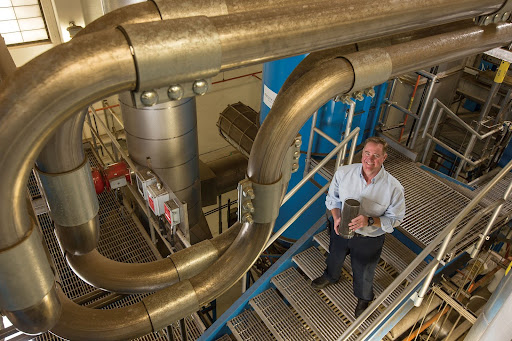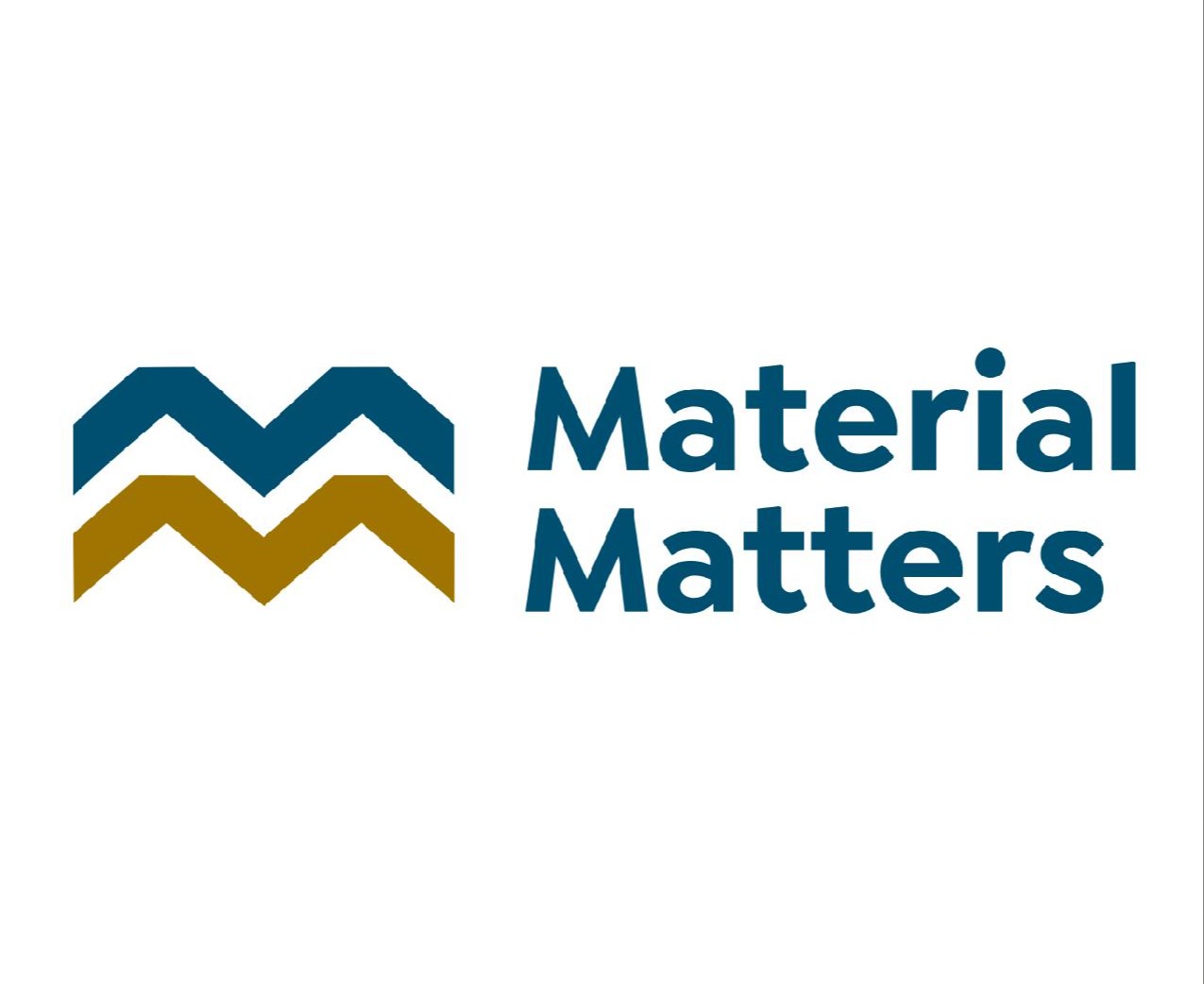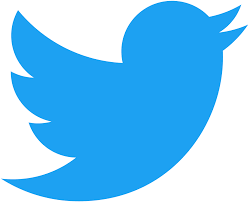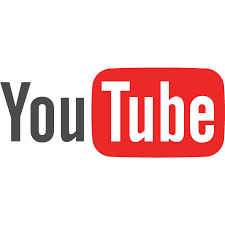|
August 2024 - MABA Biosolids Spotlight
Provided to MABA members by Bill Toffey, Effluential Synergies, LLC
SPOTLIGHT on Two New Members and Two Great Programs
Capital Region Water in Harrisburg, PA
The 60 foot by 160 foot covered biosolids storage pad, with a capacity of about 50 truck loads of biosolids cake, has been a family project. The Longnecker family, with patriarch 76-year-old Glenn and wife Sharon, son Jamie and his wife Gail, and son Danny built this framed and fabric covered shed in Elizabethtown, situated within the cluster of homes, barns, garages and roosts that comprise their farm. The shed is complete, the ribbon has been cut and the first deliveries of digested cake have been received from the Capital Region Water (CRW) plant 25 miles upriver on the Susquehanna River. The Longneckers grow field corn, soybean and barley on 300 acres for a herd of 200 steers and flocks of 30,000 chickens and guinea hens. In erecting this storage facility, the Longneckers ensure their ongoing supply of CRW biosolids, and avoid the “mess” that field unloading of cake had been for their nearly 20 years of biosolids use.

Three generations of Longneckers all joined in on the construction of the 60’ by 160’ biosolids storage facility on their 300-acre farm outside Elizabethtown, PA, a 25-minute truck ride from CRW’s plant in Harrisburg

The covered storage facility can hold upwards of 1,200 tons of biosolids cake for fertilizing field corn, soybeans and barley in support of their herd of steer and their flock of poultry
One big winner in this story is CRW, one of MABA’s newest public utility members, operating a 21 MGD facility in the city of Harrisburg, Pennsylvania. CRW is now rebuilding its land application program after years of landfill co-disposal. This rebuild is part of a long-range program for reinvestment in its biosolids treatment facilities, the implementation of a biosolids master plan completed in 2018 for this plant. CRW produces approximately 2,500 dry tons of solids annually, a number expected to grow as the agency implements a project to truck-in sources of additional gas-producing organic matter for its digesters.
Jess Rosentel, Chief Operations Officer, can readily enumerate the series of improvements that have been completed over the past several years. A capstone of these just broke ground in June 2024, the Energy Recovery Improvements Project. Improvements to solids handling systems include such features as: installation of 1/4 inch screens at its headworks; complete rebuild of its mesophilic anaerobic digesters, including interior surface liners, replacement of gas mixers with linear motion mixers and installation of fixed covers with gas holding capacity; and separate digestion of primary and secondary solids, both sources thickened ahead of digestion by gravity belt thickeners.

CRW, undertaking a series of solids handling improvements set forth in a 2018 master plan upgraded the anaerobic digesters, including adding a fixed cover in support of linear motion mixers
A key component of the digester project is the hydrolysis pretreatment of thickened waste activated solids. This process decision was supported by a comprehensive solids and energy planning model developed by engineering consultant Arcadis, managed for CWR by Arcadis’s Eric Auerbach, which showed that improved volatile solids destruction would benefit both biogas production and reduced biosolids utilization costs.
CRW chose for WAS hydrolysis the Pondus alkaline thermal hydrolysis system manufactured by Centrisys in Kenosha, WI, and represented locally by Kappe Associates, both MABA members. In contrast to the better-known Cambi thermal hydrolysis process that treats combined solids under high temperature and pressure to a Class A level of pathogen reduction, the Pondus system will pretreat the waste activated secondary solids at low temperature and pressure using an alkaline addition. The process will be ahead of thickening and mesophilic digestion, producing instead a Class B biosolids. CRW did not target Class A treatment, as it is comfortable with its Class B options for utilization. Instead, CRW prioritized improved volatile solids destruction for reduced hauling volumes and increased biogas yield in support of its outlets for Renewable Natural Gas.
Pretreatment of WAS with hydrolysis was a key objective. CRW had earlier installed Enhanced Nutrient Removal and had witnessed the troubling performance of its Belt Filter Presses (BFPs) to achieve the goal of 20 percent solids. This is because ENR produces phosphorus accumulating bacteria that under anaerobic conditions release Extracellular Polymeric Substances (EPS) that interfere with release of bound water during press operations. Hydrolysis promises to disintegrate the EPS to promote a far more dewaterable feedstock to the BFPs and hence significant reduction in total cake production.
Arcadis also guided CRW toward an innovative energy program for its solids treatment, providing two special components. First, a high strength liquid waste receiving station has been built which will allow CRW to accept trucked-in liquid High Strength Organic Waste (HSOW). This organic loading will supplement the blended primary and hydrolyzed WAS by up to 20 percent of total organic loading. Some of the biogas from anaerobic digestion will still go to boilers for internal energy use, but CRW will not need to replace its 40-year-old ICE generators. Instead, it will process the biogas to standards for Renewable Natural Gas set by UGI Energy Services (UGIES) for injection into a pipeline conveniently situated along its property boundary. CRW will operate the gas clean up equipment, but UGIES will operate the equipment for continuous monitoring of gas quality, a step required for pipeline injection. The revenue from the sale of the RNG to UGIES is nearly double the basic commodity price because of the value of the RINs (Renewable Identification Numbers) assigned to biogas. CRW will also receive tipping fee revenue for acceptance of HSOW. Nearby Derry Township Municipal Authority (DTMA), featured in the July SPOTLIGHT on Thermal Processes, has many years of experience with HSOW, and substantial additional sources of HSOW have been identified nearby by consultant Material Matters, as this region has a deep agricultural economy and many food processors.

Recent ground-breaking for the Pondus thermal hydrolysis system will add to the complex of equipment that includes the gas clean up system and the receiving station for the High Strength Organic Waste liquids that provide supplemental biogas production
This comprehensive biosolids system overhaul has taken teamwork. Rosentel gives credit to colleagues throughout the chain of command. Roy Hoke, Operations Supervisor, has championed the efforts to bring the new equipment online and ensure good performance. David Stewart, the Chief Technical Officer, was instrumental in vetting the choice of processes and equipment. CEO Charlotte Katzenmoyer and the board were engaged all along the way in understanding the choices and supporting the investments. Centrisys had to patiently await the conclusion of the yearlong negotiation between CRW and UGIES over terms of its contract before it could break ground on its Pondus system. Arcadis remains tied to CRW in its review of equipment installation. Material Matters is helping CRW set up its agency’s system for monitoring land applications by Longneckers and other farmers that may be attracted to CRW’s improved biosolids quality.
Upper Occoquan Service Authority in Centerville, Virginia
Biosolids dryers are the key feature of the Class A Exceptional Quality management program at Upper Occoquan Service Authority (UOSA). Its two dryers enable UOSA to dependably produce 7,000 dry tons annually of dried biosolids pellets for a wide variety of agricultural and horticultural uses in the northern Virginia region around Manassas. UOSA operates the Millard H. Robbins Water Reclamation Plant, serving four jurisdictions: Prince William and Fairfax Counties and the cities of Manassas and Manassas Park. It discharges an average of 42 MGD of effluent to a reservoir watershed, and hence it is tasked with very stringent standards for treatment. UOSA’s culture of innovation and high performance is captured in its solids treatment as well as its liquid treatment components.
Class A biosolids products have been a commitment of UOSA for several decades, but the dryers were not UOSA’s first venture into production of Class A biosolids. Windrow composting of its pressed biosolids cake was the original technology UOSA worked with, using to its advantage a remote location. As the plant was expanded in 2001 from 32 MGD to 54 MGD and its digester capacity was expanded, UOSA moved also to a Swiss Combi closed loop rotary dryer. The capacity of this innovative dryer, assembled for UOSA in 2004 by Berlie Technologies in Canada (now Groupe Berlie-Falco), was supplemented with the RDP Advanced Alkaline treatment system which had been installed in place of composting. RDP subsequently was kept in place to cover as a backup processing system for UOSA’s dryers if Part 503 requirements for drying were not met by the dryers or if they were down for servicing. The Swiss Combi dryer, which is a single pass dryer with a 3.5 ton/hour evaporative capacity, could not always meet the solids volumes or meet the drying standard. UOSA’s drying capacity was then amplified with the installation of an Andritz Rotary Drum Dryer, a triple pass dryer with a 4.4 ton/hour evaporative capacity, which became the primary equipment for Class A treatment. The Swiss Combi is pulled into operation in the Spring season, when the Robbins plant works to draw down its winter accumulation of microbial solids, “culling the herd,” as Solids Supervisor Kevin Gately calls it.

Kevin Gately, UOSA Solids Supervisor, with a sample of biosolids pellets produced by the Andritz rotary drum dryer

UOSA’s rotary dryers produce rounded pellets of uniform size and strength, with a strong market value
Class A heat drying is a necessary biosolids treatment step for UOSA. Brenda Arce, Process Operations Engineer, explains that the biosolids feedstock to the dryer is a blend of digested primary sludge and undigested thickened waste activated sludge (TWAS). Without drying, a blend of TWAS and digested primary solids would not meet Class B standards, so land application of a blended cake is not an option during downtime of the dryers. UOSA’s three digesters are set up for primary sludge digestion. The primary feed and digested solids drawdown are carefully balanced to keep the anaerobic system stable and free from foaming. Biogas is deployed in multiple ways: for gas mixing of the digester, for boilers to heat the process and to make steam for carbon regeneration, and for fuel for electricity generation in internal combustion engines. The off gas of the engines and boilers is directed back to the liquid treatment process to re-carbonate the flows after high lime chemical treatment for phosphorus capture. Digestate and thickened WAS are blended and held in a short-term storage tank until called upon for centrifuge dewatering in Westfalia and Alfa Laval (Sharples) centrifuges, which both produce 20 percent cake feed to the dryers. Centrifuges and dryers are operated Monday through Friday.

UOSA's three primary solids digesters with biogas collection system on their fixed covers

The control panel for the polymer activation skid for UOSA’s automated polymer feed system
The polymer feed rate is automated, an example of UOSA’s culture of high performance. Dosage is controlled by real time measurement of total suspended solids with a sensor in the centrate trough. Operators clean the probes daily. and an instrument technician is on call when operators notice bad readings. A skid mounted polymer mixing system provided by ProMinent Fluid Controls replaced an earlier in-line mixer. Together, these improvements have helped control this costly aspect of solids treatment.
Thermal drying is followed by pellet cooling and screening. Oversized pellets can be crushed and undersized material can be returned for blending back in with fresh cake. The screened pellets are temporarily stored in silos, of which there are four, each with a 200-ton capacity. One of the silos is reserved for pellets that are determined to be not within specification as Class A product by temperature monitoring. All silos are protected from hot spot development with a nitrogen purge system. The entire drying operation is kept nearly dust free with the use of sonic air fans mounted in the ceiling and with regular hosing down of all surfaces. According to Gately: “We have had no explosions, knock on wood,” a sentiment to which Lead Operator Jimmy Ojeda quickly agrees.
A constant in UOSA’s solids program is Synagro, the service company handling biosolids pellets as a soil amendment product for land application. Steve McMahon, Mid-Atlantic Product Sales Manager, arranges pellet distribution to landowners, golf courses, landscapers and soil blenders under the trade name Granulite in Virginia, North Carolina, Pennsylvania, Alabama and South Carolina. UOSA understands that its pellets, with good uniformity and strength and with low odor, are among the best pellets that Synagro can offer to customers. Should the pellets be off spec in any way for the fussier customers, McMahon can readily distribute them to farmers eager for the nutrients. Synagro also covers for UOSA the Virginia DEQ regulatory requirements for reporting and site permit compliance.

Synagro markets UOSA pellets under its Granulite trade name to farmers and landscaping customers
With close attention to excellence in design, operations and maintenance of all steps in the solids treatment process, UOSA has a biosolids recycling program that stands with the best in the Mid-Atlantic region.
For more information, contact Mary (Firestone) Baker at [email protected] or 845-901-7905. |






































